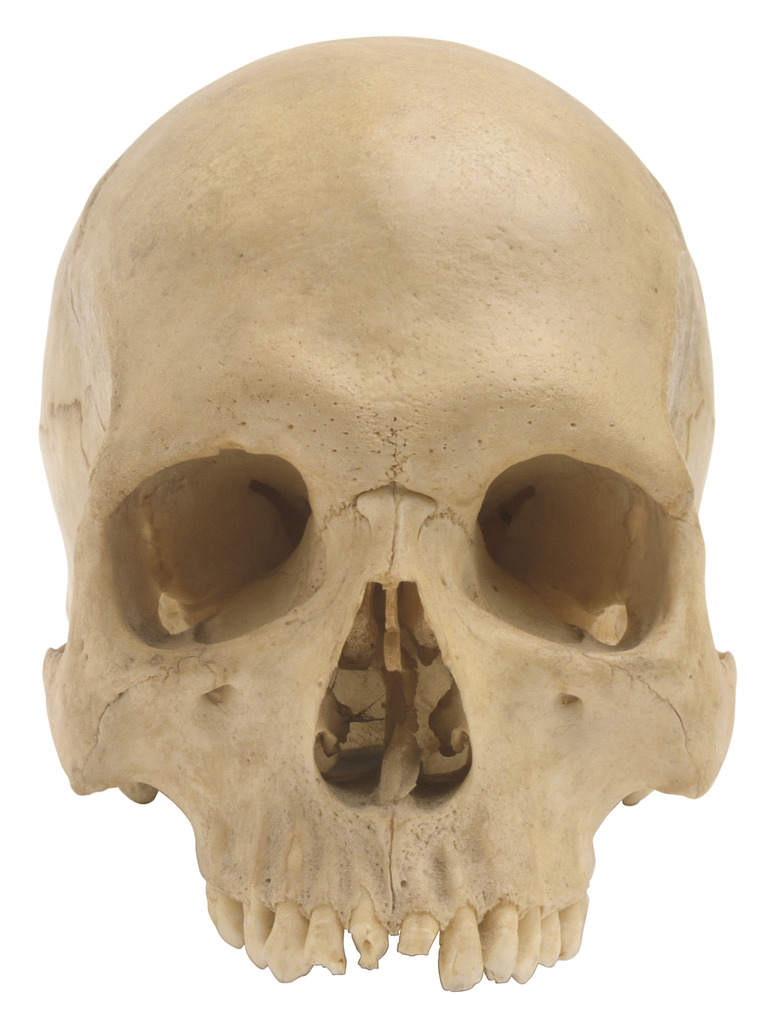How To Learn The Parts Of The Human Skull
The skull may not seem like it has many parts, but it is made up of 22 different bones. The skull needs to do some amazing things, such as compressing to fit through the birth canal and expanding to accommodate a growing brain. The skull also houses your delicate sensory organs and provides attachment points for the many small muscles that control your facial expressions. All of this adds up to a very complicated structure and learning all of the parts can be a challenge.
Skull Anatomy
Skull Anatomy
The skull is often split into two sets of bones, the cranial bones and the facial bones. The cranial bones are the plates that make up the skull and, depending on what you are counting, there are six or eight cranial bones. The facial bones are the small bones at the front of the face, and there are eight or 14 facial bones. A more detailed anatomy of the skull might include features of the bones such as sutures between cranial bones and processes, or protrusions off the bony structures.
Naming the Bones of the Skull
Naming the Bones of the Skull
The cranial bones are the frontal, parietal, temporal, occipital, sphenoid and ethmoid. There are two each of the parietal and temporal bones, one on either side of the head. So there are six named cranial bones, but a total of eight bony plates. The facial bones are the mandible, maxilla, palatine, zygomatic, nasal, lacrimal, vomer and inferior nasal conchae. All the facial bones except the mandible and vomer are paired, for eight named bones and a total of fourteen bones.
Using Models or Diagrams
Using Models or Diagrams
One good way to start learning the parts of the skull is to use a model skull. Some educational replicas show the different bones in different colors or can be disassembled to examine each part individually. Computer models can recreate much of the hands-on experience when learning the names and placements of the skull bones. The simplest and most readily available tool for learning skull anatomy is a series of paper diagrams showing different views of the skull.
Mnemonic Devices
Mnemonic Devices
Mnemonics are phrases that act as keys to help you remember a list of items. There are several mnemonics for the cranial bones in the skull. One is "PEST OF 6" and another is "Old People From Texas Eat Spiders." The letters of the first phrase and the first letters of each word from the second phrase each correspond to the first letter of a cranial bone. The six reminds you that there are six cranial bone names. For the facial bones, a handy mnemonic is "Virgil Can Not Make My Pet Zebra Laugh." In this case, the first letter of every word in the phrase is the same as the first letter of a facial bone.
Cite This Article
MLA
Becker, Andrea. "How To Learn The Parts Of The Human Skull" sciencing.com, https://www.sciencing.com/learn-parts-human-skull-22267/. 24 April 2017.
APA
Becker, Andrea. (2017, April 24). How To Learn The Parts Of The Human Skull. sciencing.com. Retrieved from https://www.sciencing.com/learn-parts-human-skull-22267/
Chicago
Becker, Andrea. How To Learn The Parts Of The Human Skull last modified March 24, 2022. https://www.sciencing.com/learn-parts-human-skull-22267/
